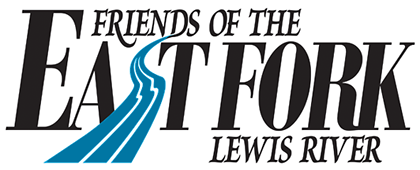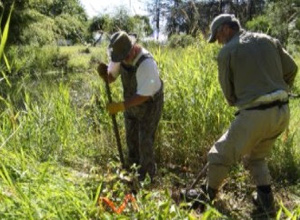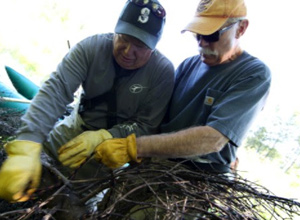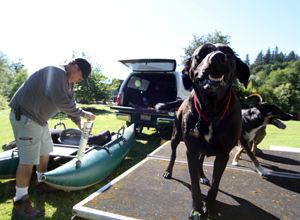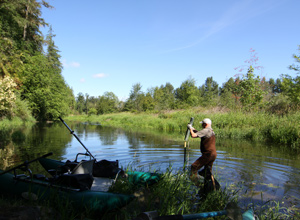With the ludicousness of the 6th Floor, we’ve stepped away dear Friends to take a look at the good going on around the County. We traveled up-stream to find a group of people on the job repairing the East Fork of the Lewis River for fish habitat. The group is comprised of people from Healing Waters Vets, Trout Unlimited, the Boy Scouts and Friends of the East Fork and headed by FOCC board member and Hydrologist Richard Dyrland.
According to FOEF website many of the formerly deep pools in the East Fork are either filled in or partially filled with sediment and no longer provide refuge from temperature extremes or provide for other kinds of fish habitat needs. Slowly the folks we met with are doing their best to change those conditions. For over 11 years efforts have been made by FOEF and Fish First to increase refuge by repairing culverts, improving channels and stream depths. The group we visited with this week were busy at work stringing recycled Christmas trees, provided by the Boy Scouts, and staking the trees in the center of the channels. The guys are at ease with their work as the method has proven a success in the East Fork. The fry are visible everywhere around us and some are reaching the juvenile stage. Some were even coming out of the water biting at flies.
As if wading around on a slippery river bank weren’t tough enough, half of the team is digging into the rooty banks to plant Oiser dogwoods. The trees have given these river stewards reason to believe they’re beaver proof. Additionally precautions were taken by wrapping young cedar trees located along the bank with thick wire fencing. Because of the invasion of canary reed grass much of the bank is diminished in native tree canopy, reducing the shady areas were fish like to hide. In turn the Oisers will provide the shade that will help keep the channels cooler and keep the fish alive. The trees were generously provided at a discount by Birds Nursery in Ridgefield. An additional 30 trees are yet to be planted by the Boy Scouts. Look forward to our August issue when we follow up these good works.
